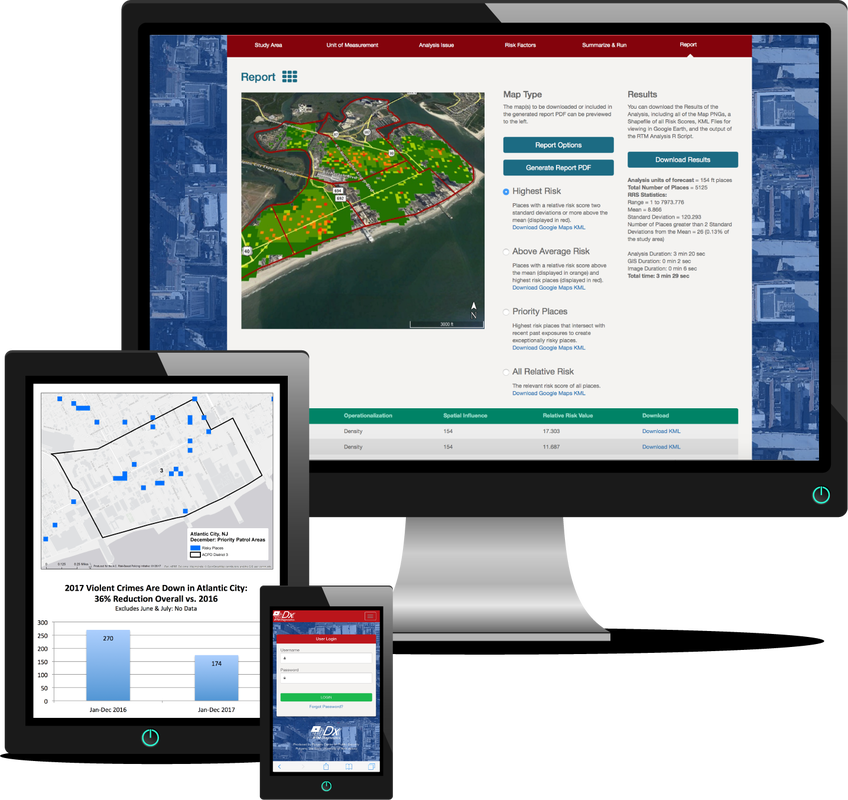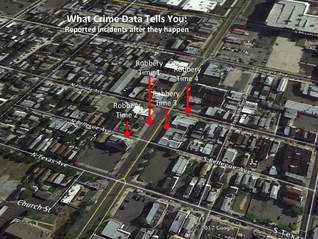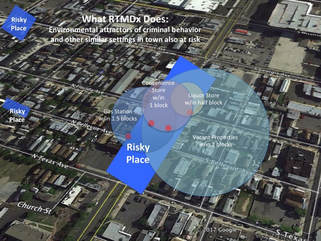Focus on Places, Not People. |
RTM Fits Your Needs
Incorporate professional judgment into risk analysis, planning and strategies that are place-based and actionable. Maximize your local resources and expertise to solve problems. |
Answer where & why. |
Risk Terrain Modeling (RTM)
Geospatial Analytics. RTM diagnoses environmental conditions that lead to crime (and other problems).
Focus on Places, not People. RTM adds the why to the where. RTM analysis brings multiple sources of data together by connecting them to geographic places. It adds context to ‘big data’ and forecasts new risk patterns for certain areas. Diagnose, Then Respond Better
RTM identifies environmental features that connect with crime patterns. This diagnosis makes very accurate forecasts and helps you prioritize resource deployments to prevent crime and reduce risks. With RTM, you know the “where and why” of crime, and what to do when they get there to address it -- without the harms of over-policing. RTM is proven to reduce crime, enhance public safety, and improve community relations. |
RTMDx Software
RTMDx is the software solution that automates RTM. Use it to inform decision-making and craft the best ways to solve problems.
RTMDx is available exclusively from the Rutgers University start-up company, Simsi. Learn more about RTMDx at Simsi.com |
Proven Success
RTM represents an investment of over 40 years of systematic investigation, fieldwork and professional experience. It is based on scientific peer-reviewed research by Drs. Leslie Kennedy and Joel Caplan at Rutgers University. It has been tested in over 45 countries across 6 continents around the world and 35 states in the United States.
RTM has a proven track record with successful outcomes that reflect community priorities. Here's evidence.
RTM has a proven track record with successful outcomes that reflect community priorities. Here's evidence.
For policing, RTM identifies risky locations for crime, enhancing the situational awareness of law enforcement. It provides real-time risk assessments about the context of crime incidents, offering strategies to prevent similar outcomes from future escalation. |
|





